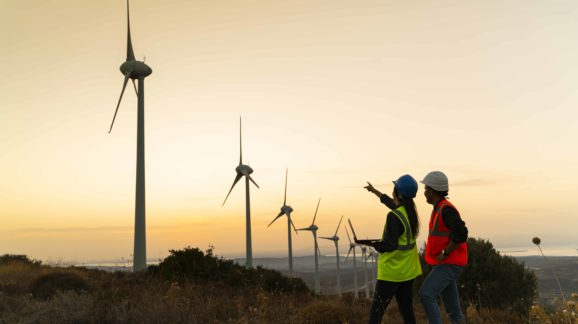Why the EPA Needs a Lesson in Constitutional Law
The Supreme Court on Monday has a chance to remind the Environmental Protection Agency that there are limits to its power.
During the Obama administration, the EPA made an amazing discovery: It suddenly found the power to establish Soviet-style central planning of the nation’s electricity sector in a provision of the Clean Air Act that virtually nobody had ever noticed. Now the Supreme Court will finally decide whether that power was real or just a magic trick pulled off by the radical environmentalists.
In 2015, the EPA published the Clean Power Plan — an ambitious strategy to shut down coal and natural gas and force states to make the transition to renewable sources of electricity.
The plan was shot through with statutory and constitutional problems, but the EPA was swinging for the fences.
Obama officials knew that the plan would be lucky to survive court challenges and would be dead as fried chicken if Democrats lost the next election.
They did, and in 2019 President Trump’s EPA repealed the Clean Power Plan and replaced it with a new rule that focused on reducing carbon emissions from coal plants without necessarily shutting them all down and forcing all states to adopt some version of California or New York’s abusively expensive electricity system.
On the very last day of Mr. Trump’s presidency, however, the powerful D.C. Circuit Court of Appeals vacated the Trump rule. Hesitating to swing for the fences again, the Biden administration almost immediately asked the D.C. Circuit to hold back on reinstating the Obama-era rule, while it tried to figure out its next moves.
One crucial question for Mr. Biden’s climate agenda is whether the EPA really has the power it thought it had discovered in the Clean Power Plan. That question is now before the Supreme Court in the case of W.Va. v. EPA, which is scheduled for oral argument Monday.
At one level, the case deals with an arcane technical question: What is the meaning of “best system of emissions reduction” under Section 111(d) the Clean Air Act?
For decades environmental lawyers had assumed that like the act’s other, similar-sounding technology standards, BSER was just a reference to some mundane technology that polluting facilities install to clean up their emissions, like a scrubber on a smokestack.
It also didn’t matter much, because Section 111(d) is unrelated to any major Clean Air Act program and has been used mostly for solid-waste incinerators, which is why almost nobody had ever noticed it before.
In a fiendishly clever move, however, President Obama’s EPA realized that “best system of emissions reduction” could just mean the entire society, including your decisions about how much electricity to use at what hour of the day in your own house — all as an extension of the EPA’s power to regulate emissions from coal plants.
If that sounds crazy, the way this case made it to the Supreme Court is even crazier. The case does not involve a challenge to the Clean Power Plan, but rather to Mr. Trump’s repeal of it, which the D.C. Circuit tossed out in a masterpiece of sophistry.
Read the full article at The New York Sun.
